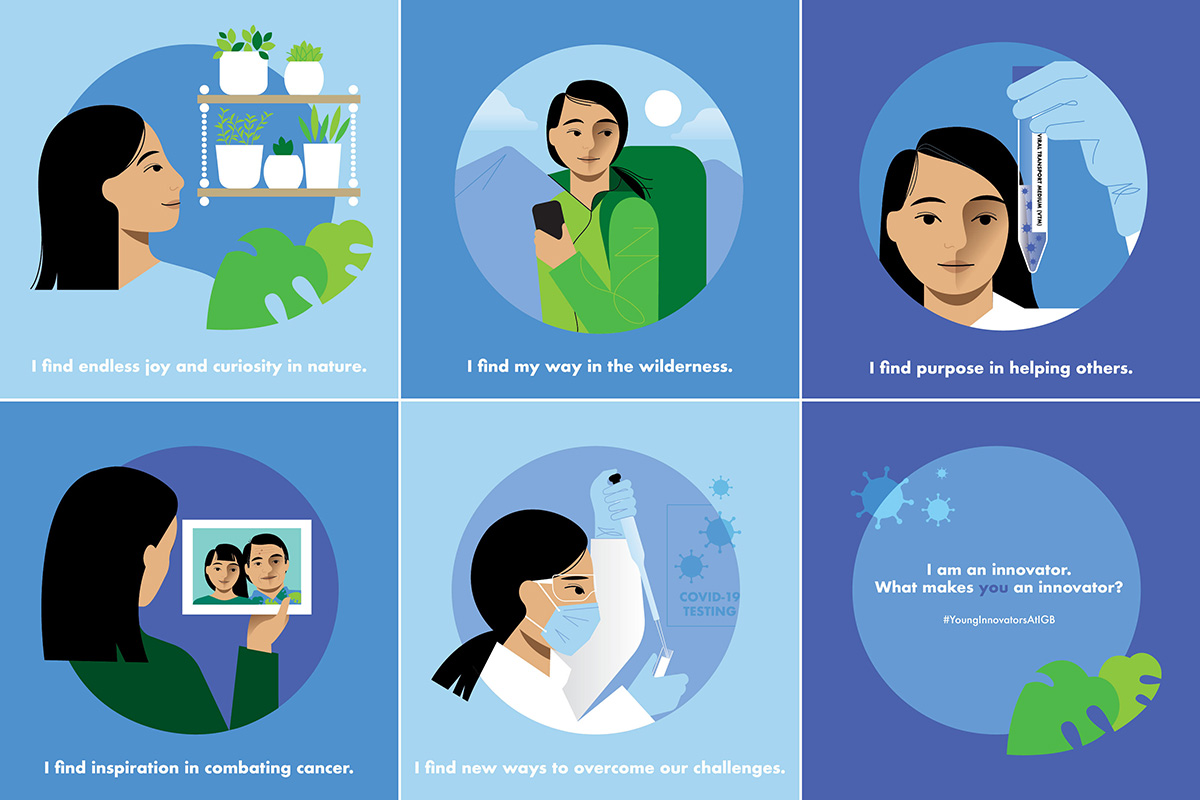
Diana Ranoa is a Carl R. Woese Institute for Genomic Biology Fellow. She currently works in Paul Hergenrother’s lab where she tests the ability of synthetic compounds to elicit host immune responses in order to block different types of cancer. During the pandemic, she volunteered to help create Viral Transport Medium (VTM) in mass quantities to facilitate testing in Illinois. Ranoa was also instrumental in developing the saliva test for SARS-CoV-2, which has attracted national attention and has been approved by the FDA for emergency use.
What inspired you to become a scientist and an inventor?
DR: I started viewing myself as an inventor during my postdoctoral years at the University of Illinois, Chicago. I had obtained a patent on certain RNA molecules that tumor cells release in response to radiation. We were able to synthesize them and use them to facilitate treatment of tumor cells.
What do you love most about science?
DR: You can work on whatever you’re interested in. It also helps if you have a supportive advisor to bounce off your ideas. I’m also interested in bench-to-bedside research where I can see my work being applied in hospitals.
Why did you pursue cancer research?
DR: During my graduate studies, I focused on the host immune system. I worked on Toll-like receptors, which were recognized in the 2011 Nobel Prize for Physiology or Medicine. When I was close to graduating, my dad was diagnosed with lung cancer. After he passed away, I realized that I wanted to use my knowledge about the immune system and apply it to cancer research. That’s why I joined my postdoctoral lab where I studied radiation oncology. I was in a collaborative environment where I was able to work with doctors for the first time.
When did you start working on the saliva test?
DR: I was working with mice for my research and was, therefore, considered an essential worker. As a result, I continued to work at IGB during the lockdown. Since I was already in lab, I volunteered to join the VTM team. My advisor knew about this and so he asked me to help develop a testing protocol for COVID. Our team grew from four people to about forty people, all working around the clock.
What were the most challenging aspects of developing the test?
DR: The volume of samples we had to process was overwhelming. At the beginning of Fall semester, I used to work 12-hour shifts to make sure everything was running smoothly. We were initially hesitant because we were dealing with COVID-positive samples. I also had to train and supervise several people, which was difficult since I am an introvert.
Has your experience with the COVID test helped with your own research?
DR: Yes, I am working on a new project that is an application of the test but in the context of cancer. We are trying to develop a diagnostic tool for the early detection of head and neck cancer. Since it is a saliva test, we are hoping that we will be able to obtain samples easily. Additionally, if we succeed, we will be able to use the PCR machines that the university invested in for the COVID tests when they are no longer in high demand for COVID testing.
Do you have any advice for other inventors?
DR: Just do it. It’s like planning an experiment: if it fails, you know you tried and you can fine-tune it next time. You need to push forward in the work you want to do.
What interests do you have outside lab?
DR: Before COVID hit, I used to enjoy traveling. I want to visit all the national parks. I also love rock climbing because it’s like a puzzle where you need to plan your route. I enjoy hiking for the same reasons: you have to plan and prepare for your trip.
This profile was written to highlight inventors at IGB to promote our new Young Innovator Program. The Catherine and Don Kleinmuntz Center for Genomics in Business and Society (The Kleinmuntz Center) is excited to offer this new pilot program for graduate students and post-docs interested in innovation and bringing their science to society. If you want to learn more about how to apply to the Young Innovator Program, please visit: https://www.igb.illinois.edu/KCYIP